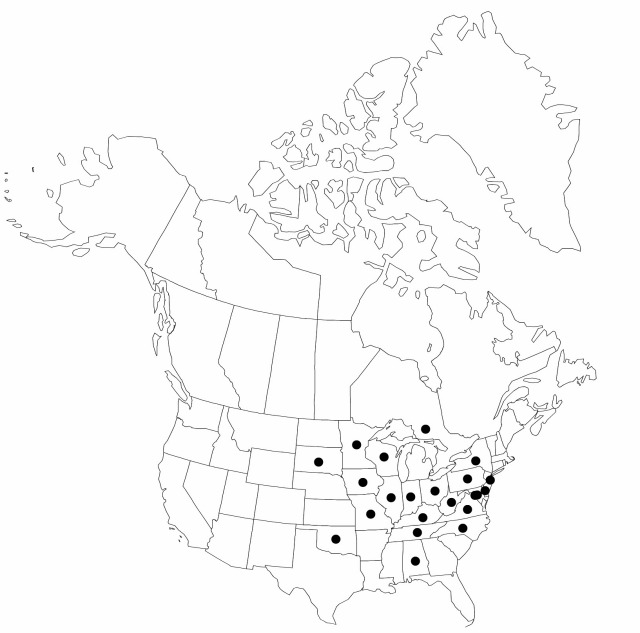Carex aggregata
Bull. Torrey Bot. Club 37: 246. 1910.
Plants without conspicuous rhizomes. Culms (20–) 30–100 cm, 1.5–3.5 mm wide basally, 0.7–1.2 mm wide distally. Leaves: sheaths usually loose, proximal green-and-white-striped and green-and-white-mottled, with conspicous transverse veins on back, fronts white to hyaline, sometimes red dotted and transversely rugose, yellow or brown and thickened at mouth; ligules 1–4.5 mm, shorter than to as long as wide; widest leaf-blades 3.5–5 mm wide. Inflorescences with 5–10 spikes, (1.5–) 2–5 cm × 8–13 mm; proximal internodes shorter than to as long as proximal spikes; proximal bracts to 3 cm; spikes with 5–15 ascending to spreading perigynia. Pistillate scales hyaline or pale-brown with green, 1–3-veined center, ovate, 2.2–3.5 × 1.2–1.8 mm, body 2/3 as long to almost length of perigynia, apex acuminate to short-awned. Anthers 1.5–2.5 mm. Perigynia pale green to pale-brown, veinless or weakly 2–5-veined abaxially, 3.4–4.6 × 1.9–2.8 mm, body somewhat spongy, thickened at base, margins serrulate distally; beak 0.7–1.4 mm, apical teeth 0.3–1 mm. Achenes circular to elliptic-circular, 1.8–2.1 × 1.6–1.8 mm.
Phenology: Fruiting late spring.
Habitat: Meadows, thickets, open forests, usually on calcareous soils
Elevation: 50–300 m
Distribution

Ont., Ala., Del., D.C., Ill., Ind., Iowa, Ky., Md., Minn., Mo., N.J., N.Y., N.C., Ohio, Okla., Pa., S.Dak., Tenn., Va., W.Va., Wis.
Discussion
Carex aggregata may be difficult to distinguish from C. gravida if the leaf sheaths are damaged or not visible on specimens.
Selected References
None.
Lower Taxa
"shortened" is not a number.
